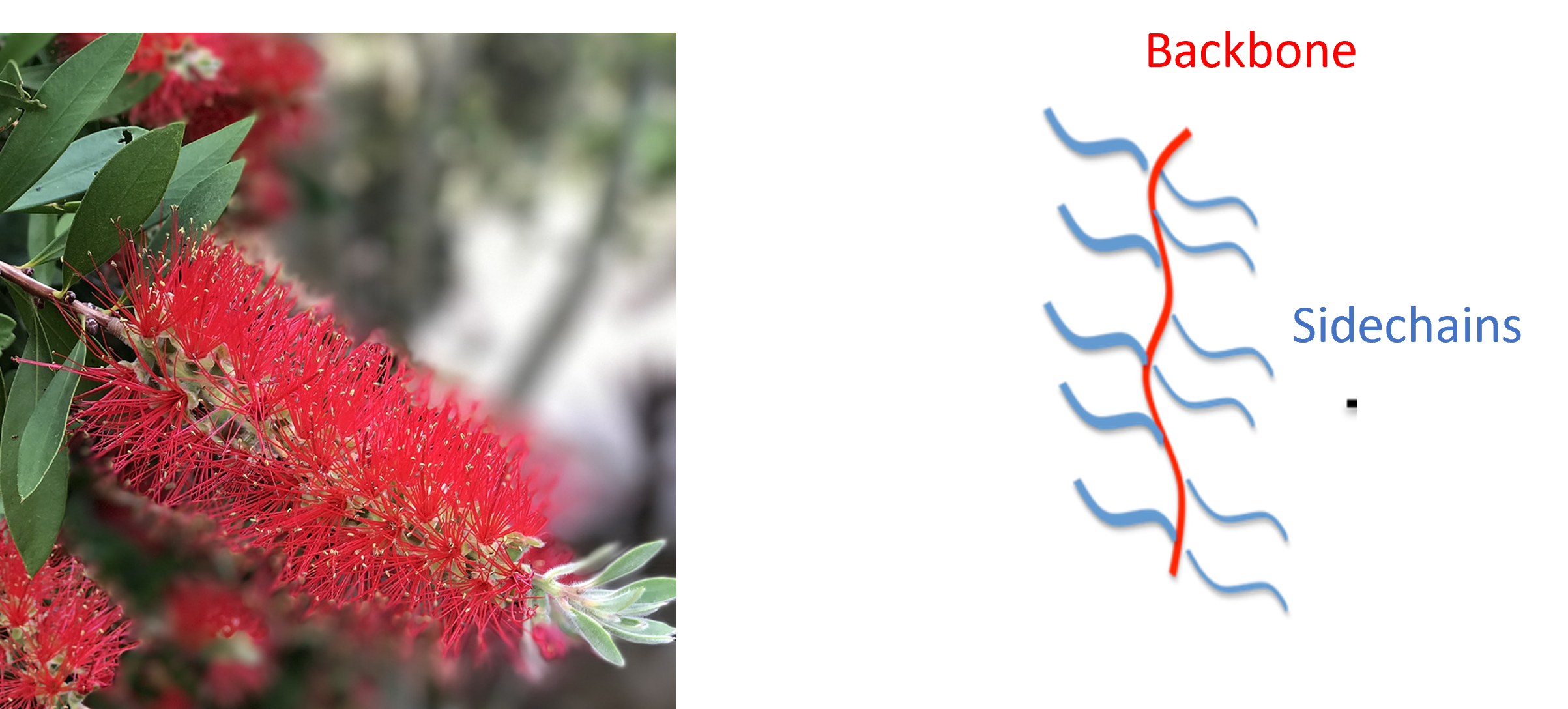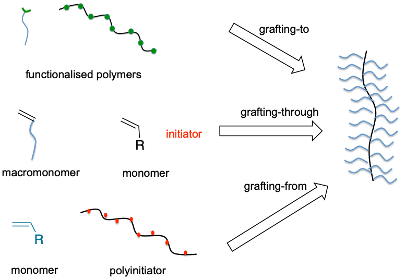Molecular Polymer Brushes (MPB)
Context
The Muellner group at the University of Sydney, lead by Markus Muellner study polymer nanostructures and ways to improve their synthesis. I did my undergraduate Honours degree with this group, synthesising MPBs for cartilage regeneration applications. I credit all my love for polymers to Markus. He taught me in third year chemistry and took me on as an honours student. He inspired me throughout and I was sad to leave their group.
About
Synthetic MPBs, also referred to as cylindrical polymer brushes or bottlebrush polymers in literature, are advanced materialsthat literally resemble a bottle-brush plant. They are are commonly synthesised through reverse deactivation radical polymerisations. MPBs have been explored previously as pressure sensors, pH-sensitive probes, super soft elastomers, drug delivery agents and as lubricants in synovial joints. During my honours thesis, I synthesised variations of MPBs to recreate the structure of a proteoglycan like material.
Properties of MPBs can be manipulated by changing their physical properties to address different problems. For example, super-soft elastomers consist of a bottlebrush network to create a rubber-like material, while drug delivery carriers may form micelles in order to encapsulate small molecules. When MPBs extend, they have the ability to absorb large amounts of solvent, while also repelling other neighbouring MPBs to produce a layer of fluid between each polymer brush. MPBs can therefore decrease the frictional forces between two sliding surfaces because they are a highly hydrated lubricated material. Thus, their application in cartilage regeneration.

Techniques for molecular polymer bottlebrushes (MPBs) synthesis
Synthetic routes for MPBs include grafting-through, grafting-to and grafting-from; and are summarised below.

Grafting-to involves two polymers with complimentary end groups that covalently link together using modern organic synthesis methods.
Grafting-through, involves the use of a predefined macromonomer or a polymer with a polymerisable end-group, which polymerise to form a brush in the presence of an initiator.
Grafting-through does not only rely on radical species; therefore MPBs can be initiated by other non-radical based methods.
Finally, grafting-from involves growing side-chains from a functionalised polymer backbone. Functional groups are installed on the polymer backbone using post-polymerisation modifications to create a polyinitiator. The polyinitiator allows monomer growth from the backbone as side chains.
Grafting-to and grafting-through allow thorough characterisation of polymer side-chains before grafting. However, the MPB obtained from these methods is difficult to purify as there may be left over polymer chains that have not attached, or macromonomers that have not reacted.
Grafting-to will not produce densely grafted MPBs due to the steric hindrances between two well-defined macromolecules; therefore, it relies on significant spacing to prevent interactions between impeding chains. Similarly, long MPBs are also difficult to achieve via the grafting-through method as it uses macromonomers that are bulkier compared to small molecule monomers that are used when grafting-from. The grafting-from method involves installing initiator sites on a polymer backbone and growing side chains using molecular monomers to produce densely grafted and long MPBs. The resulting MPB is easily purified from residual small molecule monomers.